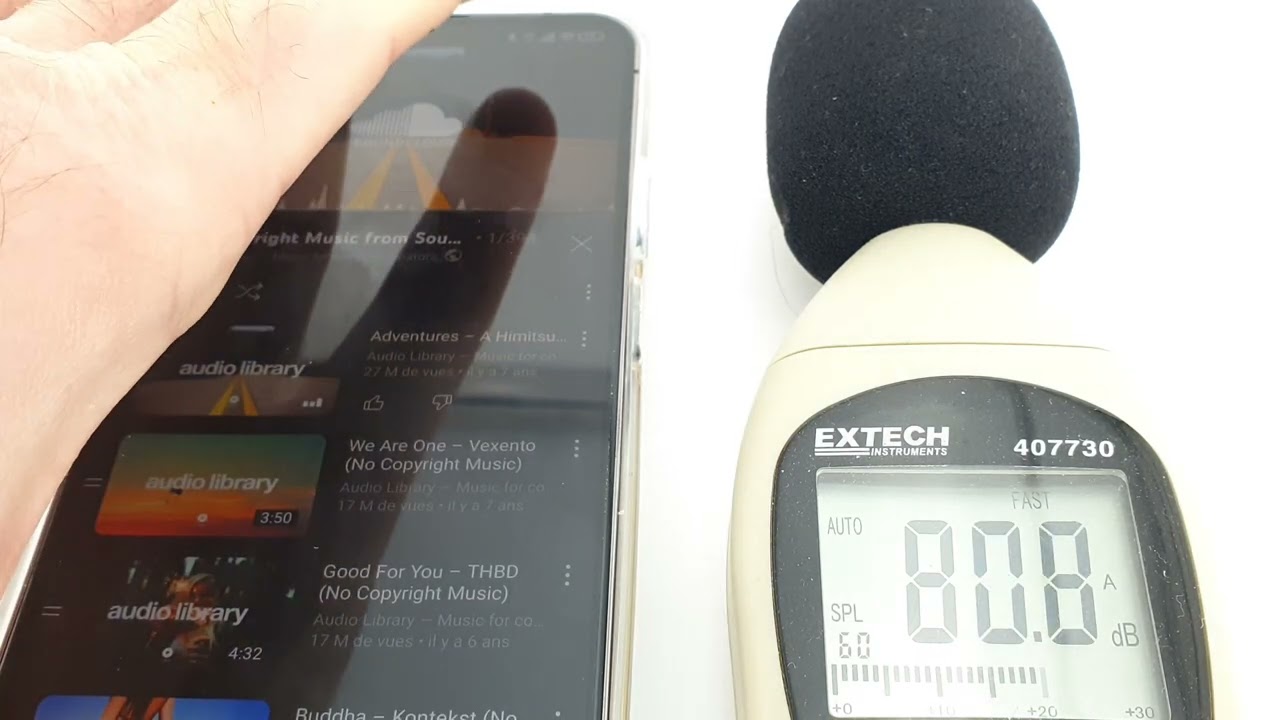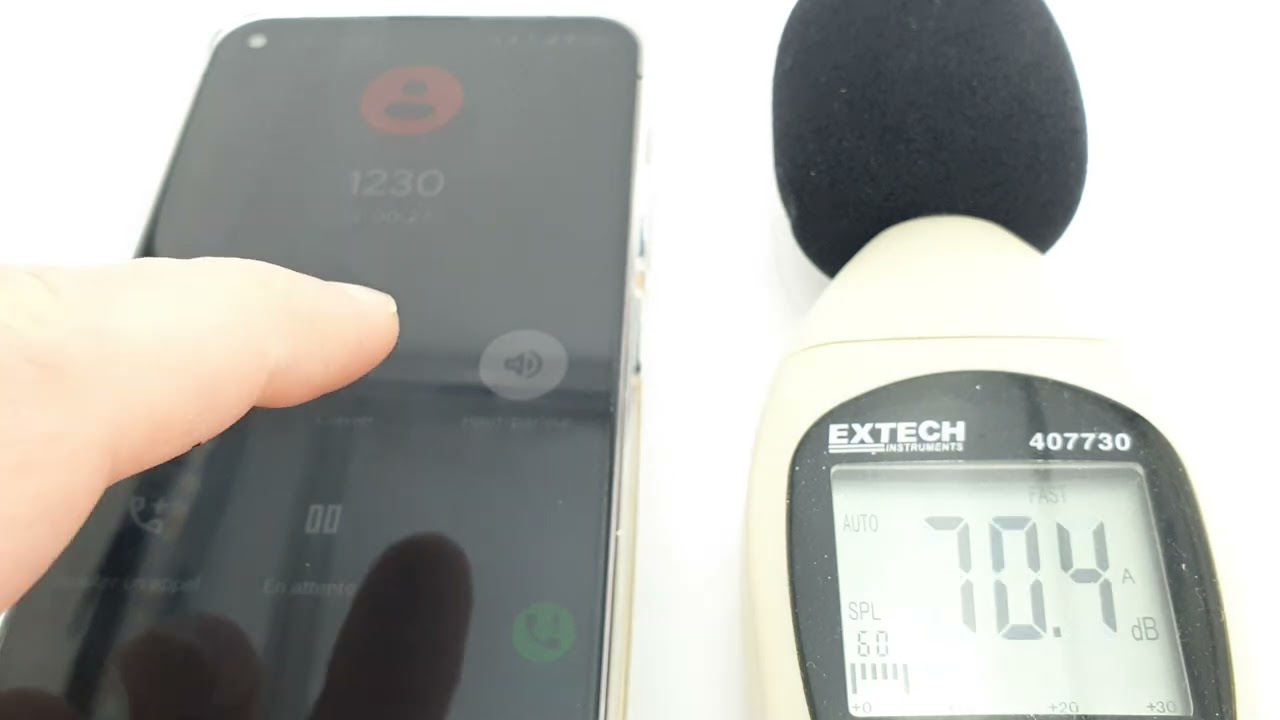Smartphones
Xiaomi Redmi Note 12 Pro: test / review
Published on: 16-04-2023 / Modified: 15-08-2024
I've been testing phones for about 5 years now, and I started this adventure with a Redmi Note 5. Since then, I've tested over 75 phones, and today I'm testing the Redmi Note 12 Pro alongside the standard version. I was full of hope of seeing something new, but it was a cold shower with the Redmi Note 12.
However, I still have some hope that the Pro version will be different, as this new model is equipped with a Sony IMX 766 photo sensor. The Redmi Note Pro range hasn't used a Sony sensor since the Redmi Note 7 Pro. I had tested this photo sensor on a OnePlus and the result was pretty good.
The changes aren't limited to the camera: this new Xiaomi Redmi Note 12 Pro also uses an architecture that's new to this range of phones. So this new model will make me forget the lamentable inertia of the other version I tested
Promotion
During Amazon Prime Days, Redmi prices are plummeting:
Redmi Note 12 Pro at 209€
The same goes for the Redmi Note 12:
Redmi Note 12 at 149.99€
These are the lowest prices since the launch of these 2 phones.
Manufacturer web site:
https://www.mi.com
Site where I have bought the Redmi Note 12 Pro:
https://amzn.to/3Q7r...
Structure of my tests
I test the phones according to a pre-established structure (see below) to provide you with as much information as possible. Unfortunately, this takes a long time. Some tests like network performance tests take several days and for photo tests I sometimes have to wait until the weather is suitable to take pictures in good conditions. I am therefore obliged to publish the tests step by step, so I invite you to come back if the test is not complete at the time of your visit.Price Redmi Note 12 Pro
The list below shows the prices for the Redmi Note 12 Pro from more than 50 sites around the world. If you are not satisfied with any price, you can subscribe to a price alert to be the first to be notified when the price drops.The above links are affiliate links from companies such as Amazon, Gearbest, Aliexpress,... If you appreciate my work, I would be grateful if you could purchase these products through these links. It costs you absolutely nothing but I get a small commission that allows me to buy the material I test. Thank you very much!
Timeline
April 12, 2023: purchase of the phone on Proximus.beApril 14, 2023: reception of the phone, the test can begin
Why this phone?
I've been testing the Redmi range for the last 5 years and every other time, Redmi manages to surprise me but it's been about 2 years since the phones evolve little, the prices on the other hand keep going up. I remember paying less than 200€ to buy a Redmi Note 7 Pro, today the Redmi Note Pro range has passed the 300€ mark.Is this justified? I would say no if I look at the technical specifications but unfortunately you also have to take into account the overall economic context. All phone prices have gone up in the last 2 years, the same goes for the Redmi.
What motivated me to buy the Redmi Note 12 Pro was the camera. In fact, this is where most manufacturers fight for your attention. This is done with millions of pixels but at the expense of common sense. This time Redmi has finally abandoned the 108 megapixel Samsung sensor they've been using for years to come back to Sony with a good sensor that I tested on a OnePlus last year.
Unpacking
The boxes of the Redmi and all the phones of the Xiaomi group are all the same, only the colors are sometimes different. In the box we find the phone, a usb cable type c, a 67 watt charger, a pocket containing the needle for the sim drawer, a manual and a soft silicone shell.
First configuration
naThe Redmi Note 12 Pro runs on MIUI 14 which is based on Android 13. So the starting configuration is the same as all other phones running MIUI 14 with just a few differences on some screens like the order of the search engines.If I go back a few years to see the evolution of these screens, I realize how invasive today's phones are and try to sign you up for all sorts of things. Google will force its assistant and Google Pay, Xiaomi will try to get you to accept advertising by manipulating the interface to get you to accept things that seem innocent on the surface.
I had gotten so used to all of this, but because I went back in time a bit when I started this article, I was able to compare the screens of the first Redmi to this one. It's not the same at all anymore. Of course, it's still possible to avoid having to sign up for all these extra services, you just have to be a bit careful and not mechanically click on the button to go to the next screen.
Finish
Redmi phones have never shone with originality, they are pretty standard and fairly anonymous phones. If you remove the logo, you won't find a specific element that will allow you to recognize them at first glance. I've never attached importance to this kind of thing, but when I have several phones to test at the same time, I sometimes have a hard time distinguishing them when they are placed next to each other.
The Xiaomi Redmi Note 12 Pro is quite large, it comes with a 6.67-inch screen occupying 86% of the front space of the phone. The screen is only interrupted by the punchy selfie sensor and fairly visible borders. It measures 163mm by 76 for a thickness of almost 8mm and a weight of 187 grams. These are similar dimensions to the Redmi Note 12, the Pro version is a little smaller but a little heavier.
The back of the phone is covered with a reflective plastic surface, I guess this mirror effect should give a more premium impression but unfortunately this is the kind of material that shows fingerprints the most. I find it pretty but not necessarily very practical and if you use a protective shell, you won't enjoy the mirror effect anyway.
The camera block is quite imposing at the back with two large circles for the main sensors. They are the same size but it's mostly an aesthetic effect because the sensors are quite different. There is the Sony IMX 766 and an ultra wide angle sensor, they are supported by a secondary sensor. This format resembles the OnePlus Nord 2T which uses the same main sensor.
Underneath we find the USB type C port, an output for sound and the sim drawer which can hold two sim cards in duplex mode, it's a small sim drawer.
On the upper part there is another output for sound and unlike the standard version, the Pro version has two outputs for sound. There is also an infrared port, a headphone output, an infrared port and a sound sensor.
On the side, nothing new, we find the volume and start buttons in the usual places. The other side is perfectly smooth since the sim drawer is integrated into the bottom of the phone.
This new Redmi Note 12 Pro is pretty enough but does not shine by its originality, Redmi has already tried all sorts of formats to return to a very classic approach with this new generation.
Specifications
The information below comes from the Device Info HW application. The application provides detailed technical information about the tested phone. The Redmi Note 12 runs on a Mediatek architecture, so all components will be linked to this technical choice such as CPU, GPU, Wifi chip, sound chip, GPS chip, ... This phone embeds all kinds of components that I have never tested before, this is the first phone on the MT6877 platform. Unlike the Redmi Note 12 model which is largely inspired by the Redmi Note 11, this phone is a real novelty. I tested the 6 Gb / 128 Gb version but there are also other configurations.
The screen is an amoled screen of 2400x1080 pixels with three frequencies (60, 90 and 120Hz) and it has the advantage of adapting the frequency automatically to the use, this has the advantage of soliciting a higher frequency only when necessary. This saves you a few milliamps of battery. This screen is capable of displaying content in Dolby Vision, HDR10, HLG and HDR10+. So this screen is very complete for a phone in this price range.
It is wifi 6 and Bluetooth 5 compatible but I don't have wifi 6 at home so I won't have the opportunity to test this protocol.
You will find all the detailed characteristics in the following screenshots:
CPU / GPU Performance
The Xiaomi Redmi Note 12 Pro is based on a Mediatek Dimensity 1080 CPU and a Mali-G610 GPU. This is the first time I've tested this CPU model but it's not the first time a Redmi has used a dimensity CPU. This is the same CPU as in the Samsung Galaxy A34 or the Realme 10/11 Pro. It is a mid-range processor that will offer more than enough power for a large majority of users. The GPU is a Mali G610 MC3, a version close to what we find in the Poco X4 GT which offered very good performance in this price range. This will reinforce the multi-use side of this phone, you will be able to use it for most games (with sometimes some sacrifices on the level of graphics) and all applications requiring a little computing power.
Benchmark Antutu/3DMark
I got a score of 415467 points with Antutu v9, this is a big increase in performance over the Redmi Note 11 Pro which was only 300,000 points. Antutu v9 tends to produce higher scores than v8 but this phone ranks above many mid-range phones I've tested. I can't call this phone a performance oriented phone but it will do very well in most situations.Gaming
To test the performance in game, I download the mobile PUBG game and evaluate the in-game experience, graphics level and depth of vision. This game is quite demanding and should help you evaluating the performance of a phone.

The Redmi Note 12 Pro is not a phone for gamers but it still does really well on PUBG Mobile. It can run the game in HD mode and the Game Turbo mode helps optimize the experience. The visual rendering of PUBG Mobile is really good and since the screen is capable of displaying a wider color space than the REC709, the scenery is richly colored. The in-game experience is perfectly smooth, textures are visible from a distance and the level of detail is really good. I didn't feel the phone get hot during the PUBG Mobile test.
Network performance
The Redmi Note 12 Pro is a global phone for frequencies, it is compatible with a large number of 4G and 5G frequencies, you should be able to use it anywhere in Europe.Signal 4G (from December 2020)
I decided to change the methodology for measuring the network because I noticed that the configuration of the mobile network changes over time. This makes it more difficult to compare phones because the conditions are no longer exactly the same.
To overcome this problem, I set up a device that captures 24 hours a day about ten parameters from the mobile network (ex: cell id, rssi, rsrq, snr, frequency,...). I then place the phone next to the device for 24 to 48 hours taking the same measurements so that I can compare them.
Overview of the phones tested with this methodology
I took 1576 measurements on the 4G network to evaluate the network sensitivity of this phone and got an average signal of -94.93 dBm with the phone and -91.96 dBm with the probe at the same time. This is an average result, the Redmi Note 12 Pro is pretty close to the probe and kept a much more stable signal. The probe experienced fluctuations of 7 dBm where the phone stayed in a much tighter envelope.
Download/Upload speed
To test the download speed, I have identified some 4G cells offering good performance where I test all my devices several times to see what download and upload speed they can achieve.
Wifi performance
To test a phone's ability to receive the network properly, I take measurements near my router and then remotely (and always at the same place). This gives me an average in dBm where a value of -90 dBm indicates poorer performance than a value at -30 dBm.Wifi signal
I measured an average signal of -13 dBm near the router and -59 dBm at a distance. These are excellent scores that indicate that the Redmi Note 12 Pro has good wifi sensitivity.
Download/Upload speed
To test the speed in Wifi, I connect to my router in 2.4Ghz and 5Ghz (if available) and use the Ookla application to measure the speed.
GPS performance
To test the accuracy of the GPS signal, I use two positioning applications to evaluate the difference between the actual position and the position indicated by the phone. This test is done outdoors with nothing to obstruct the signal. An accuracy level of up to 3 meters can easily be corrected by an application (e.g. Google Maps).
I measured a theoretical accuracy level of 2 meters with this phone but when I compared it to reality by comparing my real position with the detected position, I found that the difference was much more than 2 meters. I did the same test several times with a clear sky and I came to the same result. The level of accuracy of this phone is therefore not as good as what was indicated in the GPS application. Some of this discrepancy can be corrected by your GPS application especially if you use your phone on a road. For off-road use, I'm afraid this phone is not accurate enough.
Battery range
To test battery life I developed an application that measures the battery level minute by minute until the battery is empty. This application consumes about ten percent of the phone's resources and I do a test with 100 brightness. This test aims to reproduce a contemplative use of a phone (e.g. surfing the internet, reading articles, spending time on social networks). These results are not valid for intensive gaming/streaming use.Charging speed
The Redmi Note 12 Pro has a fast charge of 67 Watts which should result in a fairly fast charge time but I got 120 minutes with my Ugreen 100W charger, this is probably an incompatibility of the protocol used. The charge is however completely linear.
Battery autonomy
I obtained an autonomy of 612 minutes with the screen on at 100% and 1294 minutes with the screen on at 50%. So the screen consumption is almost linear. The Redmi Note 12 Pro has a very good level of autonomy because it has a comparable autonomy to the Redmi Note 12 while it is more powerful. So you should be able to reach the 2 days of autonomy in normal use like the Redmi Note 12 but enjoying a higher performance.
Energy efficiency
I tested the performance and consumption of the CPU, GPU and FPU to evaluate the energy efficiency of the Redmi Note 12 Pro. The test shows that the Redmi Note 12 Pro has, for example, 2 times the computing power of the Redmi Note 12 while consuming almost the same amount of power. That's a pretty impressive result. When I look at the performance to energy ratio of other components, I get a similar result. This Redmi Note 12 Pro is very energy efficient, this means that for a higher performance than the Redmi Note 12, it offers a comparable or even lower power consumption in some cases.
On the graph below, we see successively the increase in load of the CPU, followed by the GPU and followed by the FPU. The maximum power consumption is around 6 watts with the CPU as the biggest energy consumer. The battery temperature remains stable when each component is tested separately, but it rises rapidly when all components are pushed to the limit. The temperature rose almost 10 degrees less than 5 minutes. So if you are a gamer, you will feel the phone getting hot but not so hot that you can't hold it in your hand anymore
.
Photo camera test
To test the quality of photos produced by a phone, I do a technical test (resolution, sharpness, chromatic aberration,...) in studio (identical conditions) to evaluate the technical part objectively. From the second half of 2020, I built my own laboratory to take completely objective technical measurements. I then take pictures in real conditions to see how the camera performs. I then evaluate these photos according to my criteria but I publish the photos so that you can evaluate the result according to your criteria.Hardware
The last two Redmi Note Pro were equipped with the 108 megapixel Samsung sensor that has been used in many other phones. When this sensor came on the market, I could consider it as one of the good sensors for the mid-range but the world evolves and Redmi was stubborn to continue using it when better alternatives were available. This new model will finally change the sensor and it will mark the return to a Sony sensor, which had not happened since the Redmi Note 7 Pro.The Redmi Note 12 Pro is equipped with a Sony IMX 766 sensor of 50 million pixels that I had the opportunity to test in the OnePlus Nord 2T, I had also obtained good results in photography with this phone. So I'm curious to see how Redmi's optimization layer will handle this sensor.
The secondary ultra wide angle sensor is probably an Omnivision sensor which is not very interesting but I'll also test it to make sure I don't miss anything.
Photo quality
Photo quality (indoor/studio)
The studio test is carried out under the same conditions so that the results can be compared on an equal basis. I calibrate my lighting for each test to obtain the same brightness and colour temperature. This test is a preliminary analysis of the technical qualities of a camera. Most phones fail this test, so you should also read the results of the other tests in the following paragraphs.
Main sensor: Sony IMX 766
For this first test in studio, I already see some differences with previous generations. The first is that the photo taken by the Sony IMX766 is much clearer than the Samsung sensor of previous models. The image is better exposed. The level of sharpness is good, if I zoom in at 120%, the image remains sharp. The colors are on the other hand too cold, this is also a difference with the previous generation. This point might not be a problem for outdoor photos because the studio light tends to cool the color of the photos.
I also took a photo with all the available modes (night, pro, AI, HDR, ...) to show the differences.
The photo with the bills shows quite well that the level of sharpness is really good. In the center, the small characters of the Canadian banknote are perfectly readable. The sharpness decreases a little in the periphery but it remains really good, all the small characters are still well readable.
Ultra wide angle secondary sensor 8 million pixels
The ultra wide angle sensor lets in less light, so the photo is darker but I find that the result is still quite acceptable. The colorimetry is much better than the main sensor, it is not as cold and the color rendering is more realistic. There is of course the usual distortion but this is normal, this type of sensor is not designed to take pictures of objects close to the camera.
The sharpness is less good than the main sensor, the outline of the rubix cube are already less sharp even if I stay below 100% zoom.
The deficit of sharpness is quite visible on this photo where the small characters are no longer very readable on the Canadian bill and this sharpness degrades quite strongly on the edges. This is a normal phenomenon for this kind of sensor.
Photo: technical test
I was inspired by industrial technical tests to create my own technical test to evaluate the technical quality of a camera. This test is an objective assessment of a camera's ability to render a scene correctly.
I test the following elements:
- centre sharpness, peripheral sharpness
- colour fidelity based on 24 reference colours
- level of chromatic aberration
- dynamic range (ability to capture dark and light areas without loss)
- distortion
The technical evaluation may differ from the subjective evaluation as the feeling of a photo will be influenced by the processing provided by each manufacturer.
Main sensor: Sony IMX 766
For this first test in studio, I already see some differences with previous generations. The first is that the photo taken by the Sony IMX766 is much clearer than the Samsung sensor of previous models. The image is better exposed. The level of sharpness is good, if I zoom in at 120%, the image remains sharp. The colors are on the other hand too cold, this is also a difference with the previous generation. This point might not be a problem for outdoor photos because the studio light tends to cool the color of the photos.
I also took a photo with all the available modes (night, pro, AI, HDR, ...) to show the differences.
The photo with the bills shows quite well that the level of sharpness is really good. In the center, the small characters of the Canadian banknote are perfectly readable. The sharpness decreases a little in the periphery but it remains really good, all the small characters are still well readable.
Ultra wide angle secondary sensor 8 million pixels
The ultra wide angle sensor lets in less light, so the photo is darker but I find that the result is still quite acceptable. The colorimetry is much better than the main sensor, it is not as cold and the color rendering is more realistic. There is of course the usual distortion but this is normal, this type of sensor is not designed to take pictures of objects close to the camera.
The sharpness is less good than the main sensor, the outline of the rubix cube are already less sharp even if I stay below 100% zoom.
The deficit of sharpness is quite visible on this photo where the small characters are no longer very readable on the Canadian bill and this sharpness degrades quite strongly on the edges. This is a normal phenomenon for this kind of sensor.
Outdoor photo quality
Main sensor: Sony IMX 766
I was a bit pressed for time to test this phone, I had 3 other phones to test at the same time and I had to finish these tests before the launch date. So I couldn't choose a sunny day to take nice pictures, first I had rain and a lot of cloud cover and then some shy sun rays. Phones often produce underexposed photos when the light is not good and this Sony IMX 766 is no exception to the rule but it is by far the best of the phones I tested that day (POCO F5, Unihertz Luna, Redmi Note 12). I didn't use HDR or AI mode to artificially enhance the photos, so what you see is the raw result obtained by this camera.
The brightness could be a bit better but I'll show other photos taken with other phones below to show you that this Sony does better than the others. I also see that the saturation is stronger, the colors are more vibrant and it sometimes owes a supernatural feel to the photos. The level of detail is good but there is clearly an intervention of the software to improve it. The dynamic range is quite good despite the non-optimal conditions. I just have a completely burnt area in the center and some too dark areas in the lower left but overall, the rendering of the light and dark areas is quite good.
Here are some photos taken at the same time with other phones/sensors:
POCO F5 with Omnivision OV64B40 sensor
Redmi Note 12 with Samsung S5KJN1 sensor
Unihertz Luna with Samsung S5KHM2 sensor
As you can see it's the Redmi Note 12 Pro that comes out on top and this confirms the results obtained with the OnePlus Nord 2T which uses the same sensor.
Here are some more photos taken with the Redmi Note 12 Pro, you'll see pretty quickly that the brightness has changed a lot between the beginning and the end of the test.
Omnivision OV16a1q secondary sensor
The ultra wide angle sensor can fully express itself on landscape photos like this one and I am positively surprised by the result. This kind of sensor is usually quickly put in trouble as soon as the light is not so good but here it manages to produce photos as bright as the main sensor. The dynamic range is quite good and the colors are slightly saturated but not too much. What I had noticed in studio is confirmed here. This Omnivision sensor produces better pictures than a large majority of ultra-angle sensors.
Test photo / night
The photo app of the Xiaomi Redmi Note 12 Pro has a night mode that will help you get some pretty bright night photos. This photo is actually brighter than the real thing, it was taken with a shutter speed of 1/6 seconds and ISO 2428. The night mode will allow you to take nice night pictures as long as you don't zoom in too much. At the scale of a phone screen, the photo will appear sharp but in reality, the contours are a little smoothed. Digital noise is fairly well controlled and colors are realistic.
The secondary sensor does not do so well for night photos but if I compare it to other sensors of this type, I think it does a good job. This kind of sensor is usually totally inefficient for night pictures but here I see that the sensor manages to capture enough light to make the picture look good. The sharpness is not very good and there is some noise but I find this result surprising for an ultra wide angle sensor.
The night mode will allow you to take night photos without having to use the pro mode. The quality of the photos is sufficient for a phone screen or to be shared on social networks.
Video quality
Stabilisation

The Redmi Note 12 Pro is able to stabilize videos but does not manage to completely absorb the vibrations, we still see the shocks caused by each step. Stabilization was better handled on the OnePlus Nord 2T which uses the same sensor and it also allowed filming in 60 fps which is not the case with the Redmi.
Video normale conditions

The Xiaomi Redmi Note 12 Pro is capable of shooting in 4k and 30 fps where the OnePlus Nord 2T can go up to 60 fps with the same sensor. I shot these 3 sequences on the same day as the photos taken earlier in this article, so the conditions were not very good but this Sony sensor still does quite well. The videos are brighter than the photos, the focus is very fast, the sharpness and focus are good, the dynamic range is wide enough not to lead to overexposure (or its opposite). This Sony IMX 766 sensor shows here again its qualities.
Video low light

The Sony IMX 766 sensor is capable of producing quite bright night videos, the brightness is actually quite close to reality. The sharpness on the other hand is rather random, it manages to quickly establish itself when I do not move but even at rest it is not extraordinary. The ability of this phone to produce night videos will allow you to make good videos if you watch them on a phone screen but if you watch them on a large screen, you will notice quite quickly the defects of sharpness.
External audio quality
This test is intended to give you an overview of the volume and sound quality during calls and when listening to music through the external speakers.
Audio quality / external speakers

The Redmi Note 12 Pro produces stereo sound with a speaker on the bottom edge of the phone on the one hand, and on the other hand the monitor speaker that is used as a second speaker. The two speakers do not have the same power, the one on the bottom of the phone is more powerful. The sound is however quite balanced, it is of good quality where the highs are not exaggerated and the bass are well rendered for a speaker of this size. The power of the sound is a little above average. The sound rendering is much better than on the Redmi Note 12.
Audio quality / call

The sound in call is of good quality, the highs are not exaggerated and the volume is a little above average. If I use the external speaker the volume is well above average with peaks above 80 dB. The sound is here more acute than with the speaker of listening but the voice remains perfectly comprehensible.
Audio quality (headphones)
To test the quality of the phone's audio output, I connect the device's audio output to a measuring tool, then play sounds on all frequencies and measure the differences between the original sound and the sound produced by the phone. In this way I measure the phone's ability to correctly reproduce all sounds.Audio quality via headphones
I measured the sound quality of the Redmi Note 12 Pro by playing it all frequencies and comparing the result with the original file. The Redmi Note 12 Pro does take some liberties on some frequencies where I can see that there is a gap in the frequencies, but the gap is quite small and I'm not sure if an untrained ear would be able to detect these differences. This phone produces a powerful sound, it outperforms most phones I've tested and it manages to do so with very little distortion. This is the first time I've seen a Redmi venture anywhere near high-end sound like what you might find from Samsung. It still has a ways to go but it comes close.
Screen quality
To test the screen, I use a colorimetric probe that measures the color accuracy of a screen, as well as other parameters to see if a screen is able to correctly reproduce an image. I also test the brightness level to determine if the screen will be able to display an image in full sunlight.Colorimetry
Xiaomi was one of the first brands to use amoled screens on entry and mid-range, then they went back to LCD and now they are back with amoled. The screen of the Redmi Note 12 Pro is an excellent screen on many criteria. If you choose the standard mode, you'll get a very fair colorimetry with a dE 0.97, it's one of the best colorimetry levels I've tested.
With the standard mode, the phone stays locked in the REC709 color space. This in itself is not a problem unless you want to watch videos in HDR. To enjoy a wider color space, you should choose the "intense" mode which will extend the color coverage to DCI-P3 and offer a superb color rendering. The only negative point with this color space is that the image becomes colder and the colorimetry is not as good.
Brightness / Contrast
I measured a brightness of 475 cd/m² and could not push the screen any higher even when using the sun mode and flooding the screen with light. This either means that the brightness is indeed limited or that the light sensor is not on the front. With this level of brightness, you can use the phone just about anywhere but in direct sunlight you'll have to orient the screen to not receive direct light because readability will be less good.
Contrast
I measured infinite contrast which will result in really blacks. I also obtained an excellent gamma of 2.19 with very little deviation on the whole gray, I have only 2 values above a dE of 2.
The screen of the Redmi Note 12 Pro is therefore an excellent screen with perhaps a small weakness in brightness, to be checked in use depending on the position of the light sensor.
Biometry
Not yet available / testedOperating system
I've been using MIUI for quite a long time now, so I don't need a learning curve to adapt to its specifics. I find that MIUI has progressed a lot in the right direction in the last few years, it is almost comparable to One UI from Samsung. There is however one thing that has not evolved in the right direction, it is the default installed applications. I've never really been bothered by the presence of default installed apps but I think Redmi goes too far.
After starting a phone for the first time, I expect to find a home screen with the bare minimum so that I can then customize it to my needs. Redmi now pushes its apps so much that the home screen is literally filled with apps I don't want to use. I end up with 12 icons on the home screen, 8 of which I will never use. This willingness to push their apps is counterproductive and will have the opposite of the desired effect.
Encoutered bugs
Not yet available / testedAccessories Redmi Note 12 Pro
Compare Redmi Note 12 Pro with the others
Test / Review conclusion
The Xiaomi Redmi Note 12 Pro comes in a higher price bracket than the previous generation and although all the prices of all the phones have gone up, I was still hoping to find some new features and luckily that is indeed the case.
What motivated me to buy this phone in the first place is the Sony IMX 766 camera sensor that I had the opportunity to test on the OnePlus Nord 2T. This choice marks a break in the Redmi range because it had been years since Redmi used the same Samsung sensor in most of its mid-range devices. I haven't seen a Sony sensor in a Redmi Pro since the Redmi Note 7 Pro. This sensor is arguably one of the best in this price range, I compared it to the 108 megapixel Samsung sensor or the 64 megapixel Omnivision sensor, the observation is pretty clear, the Sony outperforms them all.
The photo is not the only new feature of this phone, there is also the choice for a Mediatek Dimensity CPU which takes the performance of this phone to a much higher level than the previous generation. This does not make this Redmi a phone for gamers, but the performance level is enough to play most games in good conditions, more demanding applications do not scare him either. This performance gain is also felt in all the daily gestures, if you are not a gamer, you will also benefit. A gain in performance is usually accompanied by a degradation of autonomy but this is not the case for this phone, I measured the power per watt consumed and this phone is one of the best I have tested. The phone gains in performance and therefore keeps a good battery life.
The screen is clearly another asset of this phone, it offers extensive color coverage, good colorimetry and can automatically switch between frequencies without any intervention from you. It's been a few years since the Redmi range has been using amoled screens and we're reaching a good level of maturity in screen quality here.
The Redmi Note 12 Pro uses a sound chip that I've tested in other phones but the sound produced by this phone is more powerful than what I've tested so far. The sound is powerful with very little distortion and good fidelity on most frequencies.
This phone obviously does not have only qualities, I also found some flaws. The most obvious one is the presence of all sorts of unwanted applications in the phone as soon as it starts. I'm used to MIUI but I think Redmi goes a bit too far. From the first time I started the phone, my home screen was filled with apps I don't need. I also noticed that the GPS signal accuracy is a bit behind and the 4k video stabilization fails to completely absorb vibrations.
So the Redmi Note 12 Pro costs more but it offers you some interesting new features. I see two alternatives with the OnePlus Nord 2T which I also tested, this OnePlus is a slightly more premium phone and although it probably costs more than the Redmi, it is a better phone in many ways. The other alternative is the Samsung Galaxy A34 which is better than the Redmi, offers a better finish but its camera is less powerful than the Redmi's.
Strengths
Screen quality
Daytime photo quality
Network sensitivity
Wifi speed
Price/performance ratio
Battery life
Power performance
Sound quality
Weaknesses
GPS accuracy
Unwanted applications
Perfectible 4k stabilization
Alternatives to this product
OnePlus Nord 2T
Samsung Galaxy A34
 LAURENT WILLEN
LAURENT WILLENHead of myself on this blog
I share my passions on my blog in my free time since 2006, I prefer that to watching nonsense on TV or on social networks. I work alone, I am undoubtedly one of the last survivors of the world of blogs and personal sites.
My speciality? Digital in all its forms. I have spent the last 25 years working for multinationals where I managed digital teams and generated revenues of over €500 million per year. I have expertise in telecoms, media, aviation, travel and tourism.










































Questions/Comments